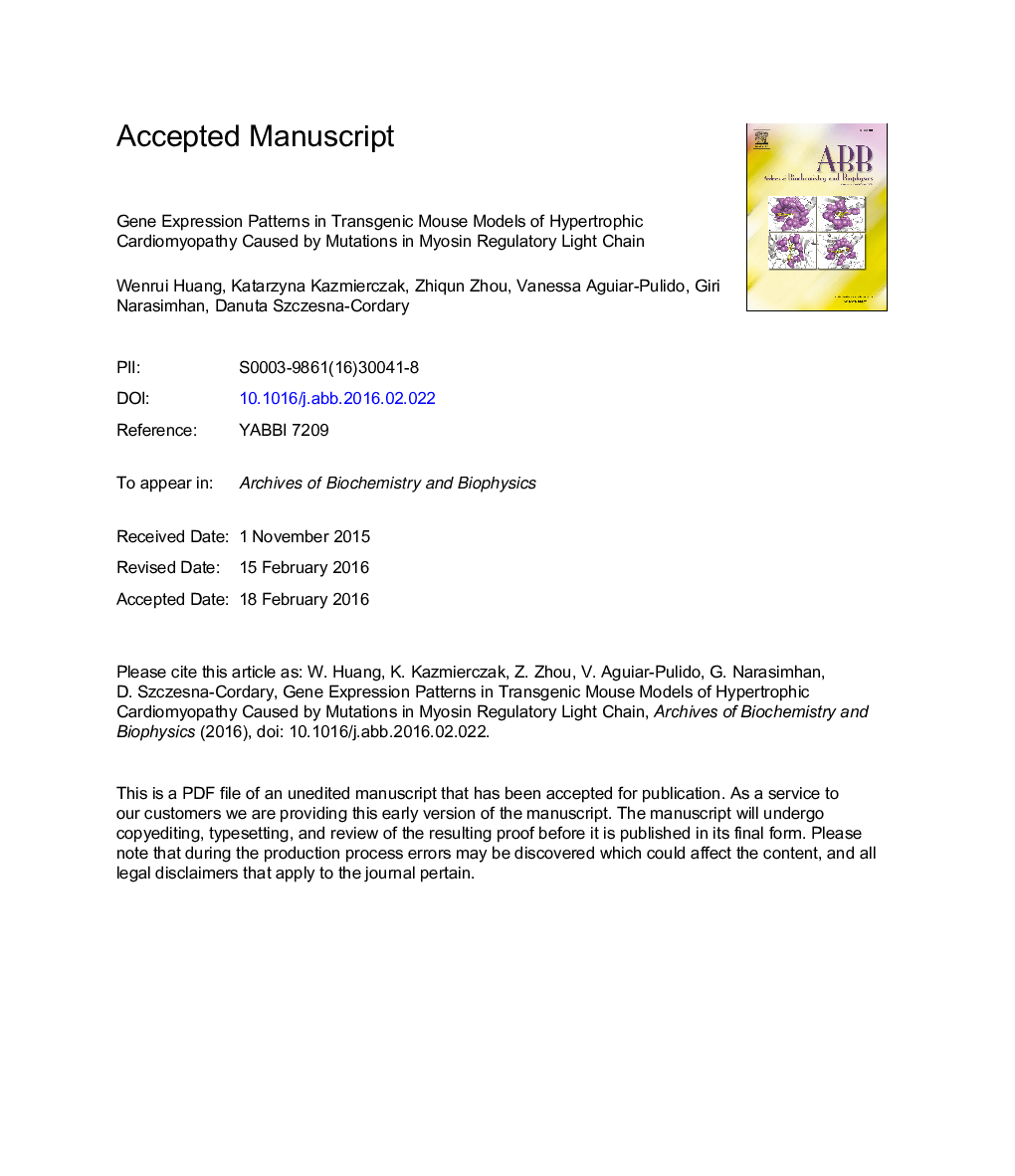| کد مقاله | کد نشریه | سال انتشار | مقاله انگلیسی | نسخه تمام متن |
|---|---|---|---|---|
| 8289329 | 1536302 | 2016 | 35 صفحه PDF | دانلود رایگان |
عنوان انگلیسی مقاله ISI
Gene expression patterns in transgenic mouse models of hypertrophic cardiomyopathy caused by mutations in myosin regulatory light chain
ترجمه فارسی عنوان
الگوهای بیان ژن در مدل های موش های ترانس ژنیک از کاردیومیوپاتی هیپرتروفی ناشی از جهش در زنجیره سبک نورونی مائوزین
دانلود مقاله + سفارش ترجمه
دانلود مقاله ISI انگلیسی
رایگان برای ایرانیان
کلمات کلیدی
RLCHCMPathological hypertrophyPCA - PCADifferential gene expression - بیان ژن دیفرانسیلPrinciple component analysis - تجزیه و تحلیل اجزای اصلFold-change - تغییر فیدMicroarray - ریزآرایهmyosin regulatory light chain - زنجیره سبک نظارتی میوزینTransgenic mice - موش ترانس ژنیکGene ontology - هستیشناسی ژنیHypertrophic cardiomyopathy - کاردیومیوپاتی هایپرتروفیک
موضوعات مرتبط
علوم زیستی و بیوفناوری
بیوشیمی، ژنتیک و زیست شناسی مولکولی
زیست شیمی
چکیده انگلیسی
Using microarray and bioinformatics, we examined the gene expression profiles in transgenic mouse hearts expressing mutations in the myosin regulatory light chain shown to cause hypertrophic cardiomyopathy (HCM). We focused on two malignant RLC-mutations, Arginine 58âGlutamine (R58Q) and Aspartic Acid 166 â Valine (D166V), and one benign, Lysine 104 â Glutamic Acid (K104E)-mutation. Datasets of differentially expressed genes for each of three mutants were compared to those observed in wild-type (WT) hearts. The changes in the mutant vs. WT samples were shown as fold-change (FC), with stringency FC â¥Â 2. Based on the gene profiles, we have identified the major signaling pathways that underlie the R58Q-, D166V- and K104E-HCM phenotypes. The correlations between different genotypes were also studied using network-based algorithms. Genes with strong correlations were clustered into one group and the central gene networks were identified for each HCM mutant. The overall gene expression patterns in all mutants were distinct from the WT profiles. Both malignant mutations shared certain classes of genes that were up or downregulated, but most similarities were noted between D166V and K104E mice, with R58Q hearts showing a distinct gene expression pattern. Our data suggest that all three HCM mice lead to cardiomyopathy in a mutation-specific manner and thus develop HCM through diverse mechanisms.
ناشر
Database: Elsevier - ScienceDirect (ساینس دایرکت)
Journal: Archives of Biochemistry and Biophysics - Volume 601, 1 July 2016, Pages 121-132
Journal: Archives of Biochemistry and Biophysics - Volume 601, 1 July 2016, Pages 121-132
نویسندگان
Wenrui Huang, Katarzyna Kazmierczak, Zhiqun Zhou, Vanessa Aguiar-Pulido, Giri Narasimhan, Danuta Szczesna-Cordary,
